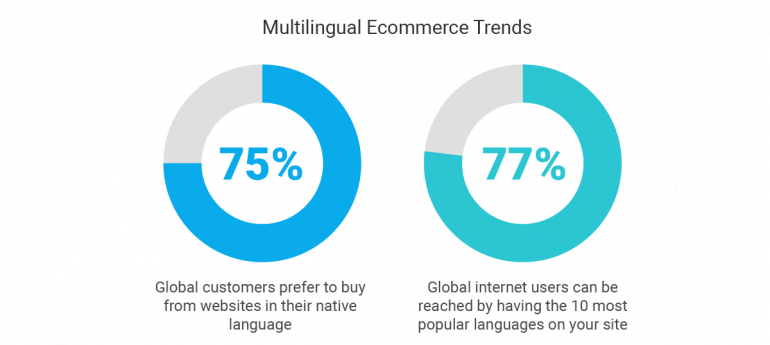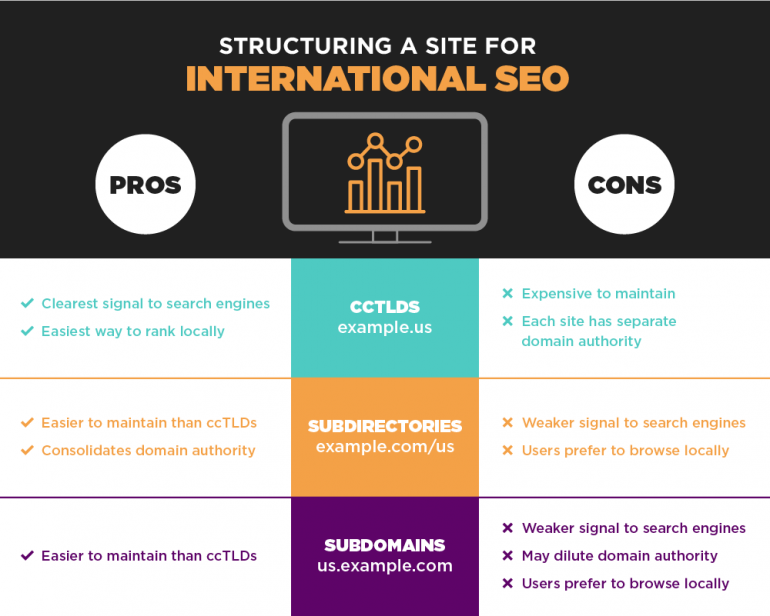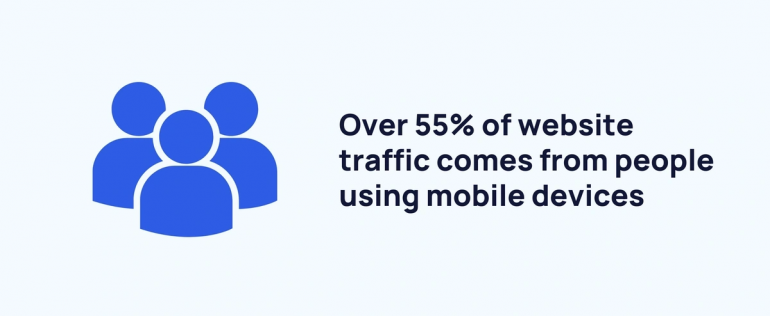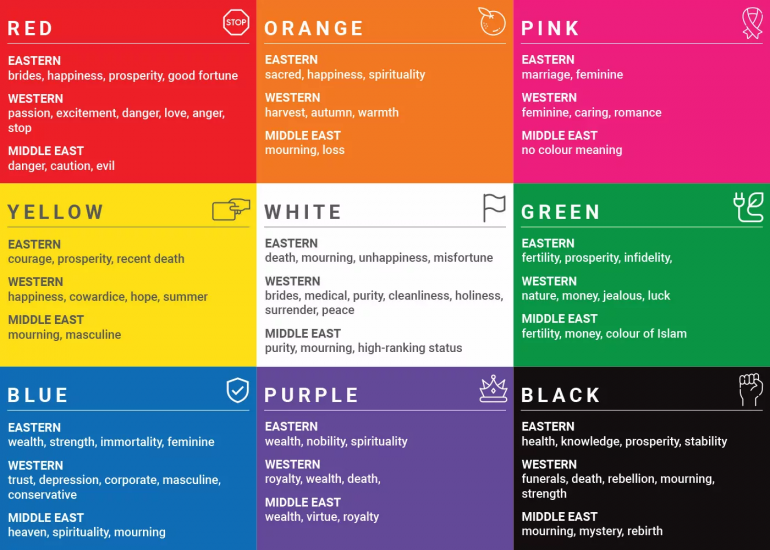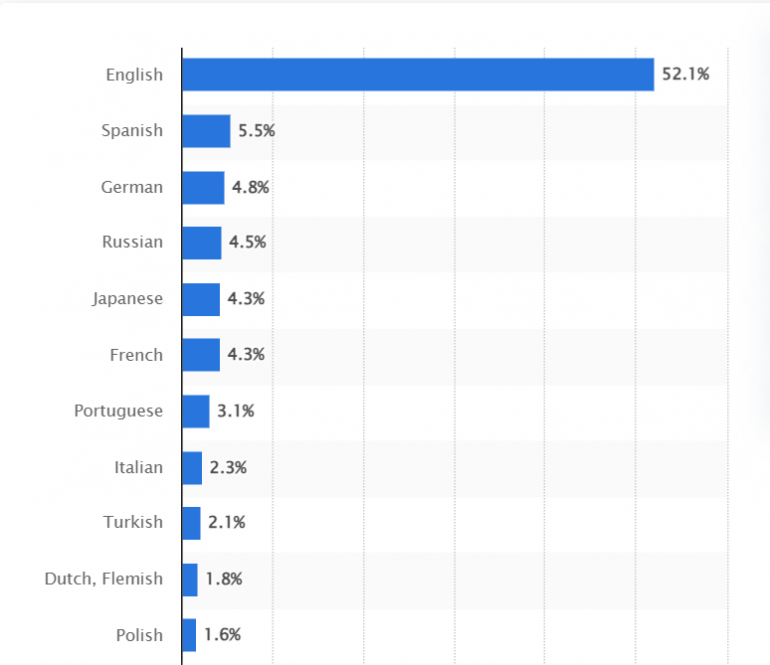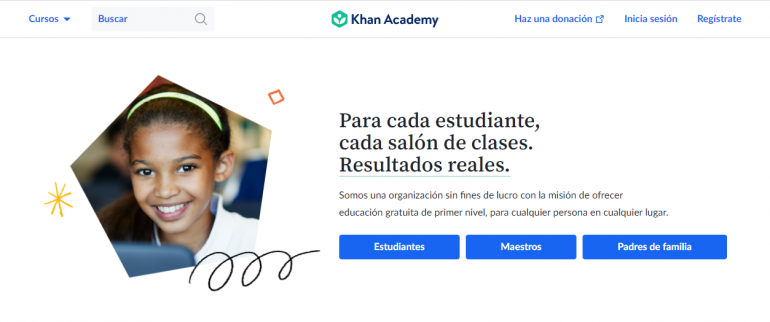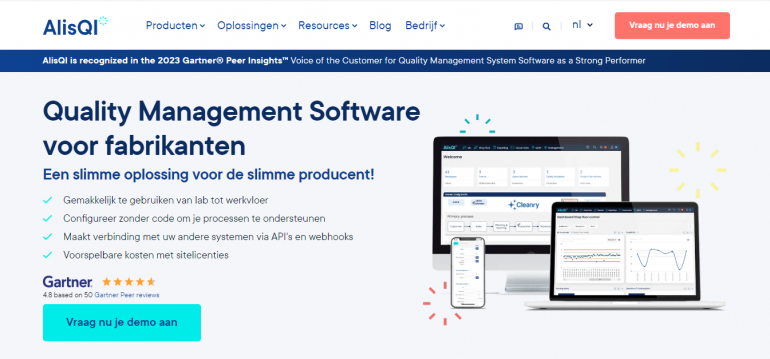Designing Multi-Language Websites: Guide 2024 + Examples
Have you ever come across a website that wasn't in your language and just clicked away? Imagine the millions of people who do that every day. Multi-language websites let people from all over the world experience your brand and do business with you in their own comfort zone.
Now you might think creating multilingual websites is a big challenge but it isn't as scary as it sounds. In this guide, we will give you a 9-step plan for building a multi-language website that impresses. Plus, we will also show you 5 examples of such sites to inspire your creativity.
How To Create Multi-Language Websites: Your 9-Step Plan
75% of customers would rather shop on websites that are in their native language. So if you are looking to tap into the immense potential, here’s a straightforward 9-step process to follow:
1. Choose A CMS That Supports Multilingual Capabilities
A CMS lets you edit content, manage pages, and publish information. But for a multilingual website, you need a CMS that can handle multiple languages. Here's what to look for in a multilingual CMS:
- This might seem obvious but make sure the CMS lets you create and manage content in different languages. This could be features like editing all language versions of a page at once or creating workflows for translating content.
- Some CMS platforms have features that can translate your native language content directly within the system. This can be a great time-saver, especially for smaller websites.
- You will want to choose a CMS that lets you define how your website's URLs will display different languages. There are common options like subfolders (e.g., example.com/fr for French) or subdomains (e.g., fr.example.com). Pick a CMS that supports your preferred structure.
- Search engines use language codes to understand the language of your website content. Make sure the CMS allows you to easily define these codes for each language version of your website.
2. Plan Your Site Structure To Accommodate Multiple Languages
Now that you have chosen a multilingual CMS, it is time to think about how you will organize your website to handle more than one language. This might sound simple but a well-planned structure makes managing and maintaining your multilingual site much easier in the long run.
Here are the main things to consider:
- Make a list of all the pages, menus, and elements on your website. This will help you visualize how they will translate into different languages.
- Map out the language flow. Decide how users will switch between languages on your site. Will it be a dropdown menu, flags, or something else? Make sure the language options are clear and easy to find.
- Think ahead and plan for content expansion. Will you add more languages in the future? Choose a structure that can accommodate this growth without a major overhaul.
- Prioritize content based on audience. If you are targeting specific regions with your multilingual site, prioritize content that would be most relevant to those audiences.
- Maintain a consistent layout and design across all languages. This will make it easier for users to navigate your multi-language website, regardless of their preferred language.
Once you have your site structure mapped out for multiple languages, you need to make sure each translated page is designed to grab attention. Web Design is a great resource for web designers looking to improve their UX design skills.
We offer many free tutorials and articles on topics like user interface (UI) design, user research, and information architecture – all of which can be valuable for creating multilingual websites that are informative and aesthetically pleasing for all your audiences.
3. Determine Your URL Structure
Now you have to decide the URL structure for your multilingual website. This is somewhat technical, but trust us, it matters. The way you structure your URLs affects how your site displays in different languages and how search engines understand your content.
There are 3 main ways to do it:
- Subdirectories: This method uses folders within your main domain name to show different languages. For example, your website's homepage in English is example.com/en and the Spanish version could be example.com/es. This is a simple and popular option.
- Subdomains: Here, you create separate subdomains for each language version of your website. For instance, en.example.com for English and es.example.com for Spanish. This is more flexible but can be difficult to manage.
- Top-Level Domains (TLDs): In this approach, you will use entirely different domain names for each language. So you might have example.com for English and example.de for German. This is the most complex option and you have to carefully plan for branding and SEO.
Choosing the right approach depends on different factors:
- If you are targeting a specific region with its own language, a country-specific TLD is a good choice.
- For a smaller website, subfolders will be sufficient. But for a larger site with a lot of content, subdomains or TLDs offer better organization.
- Your technical expertise will play a big role here. Setting up subdomains and TLDs requires more technical knowledge compared to subfolders.
Here's some extra advice: Be consistent no matter which structure you choose. Use the same approach for all your multilingual content to avoid confusing users and search engines.
4. Select A Reliable Translation Service Or Translator
Choosing how to translate your website's text is a big decision. There are 2 main options: translation services and human translators. Let's take a look:
Machine Translation (MT) Services
These services use artificial intelligence to automatically translate text from one default language to another. Google Translate or Microsoft Translator are popular options for this.
- Pros: Fast, affordable, and can handle large amounts of content.
- Cons: Machine translations can be inaccurate and lack nuance, especially for complex content.
Professional Translators
You can hire human experts who specialize in translating languages.
- Pros: High-quality, accurate translations with proper cultural context.
- Cons: More expensive and time-consuming than MT services.
Here's how to pick the right option:
- Professional translators are more expensive than MT services. Most translators on different freelance platforms charge between $20-$50/hour.
- For simple text, go for MT services. But a professional translator is a better option for complex content with industry-specific technicalities.
- Think about how many languages you need. If it is just a few, hire a professional translator. But if you need translations in many languages, using machine translation services can save you money initially, and then you can have a professional review to ensure everything is perfect.
Now there is a way to get the best of both worlds when it comes to translating your website content: hiring local content writers through a global headhunter agency like Genius. They can find talented content writers in your target market.
These writers are native speakers who understand the cultural complexities and slang used in everyday search queries. They also have the writing skills to create compelling content that matches your target audience.
Compared to hiring professional translators, you get lower rates when working with them. But since these are professional writers, not just translators, they deliver more powerful content because they understand the art of SEO content creation. This ensures your website ranks well in local search results while still sounding natural and engaging.
Pro-Advice:
Whichever option you pick, proofread the translations carefully before putting them on your web pages.
5. Implement Language Switcher Prominently In Your Design
No one wants to search for the right language option. A prominent language switcher makes it obvious how to change languages and keeps your visitors happy and exploring. Here's how to make your language switcher stand out:
- Put the switcher where everyone can see it. Common spots are the top right or left corner of your website header or footer. Basically, anywhere that is consistently visible across all pages.
- Don't overthink it and keep it simple. Use clear language names or even flags to show different languages.
- Use a dropdown menu or a click-to-expand list. Show the most common languages first, and offer a link to "See all languages" if you have a long list.
- Add a "Remember my language" option. This saves visitors from having to switch languages every time they visit your site.
More than 55% of all website traffic is from mobile devices. Make sure your language switcher is easy to tap and use on all devices.
You don't have to limit yourself to having a multi-language website with a language switcher only if you are targeting another country. Even as a local business, you can benefit from having one. Let's take Prime Time Window Cleaning for example. While they are a local business serving the Chicago area, a multilingual website can still be a smart move.
Chicago's population totals 2.67 million. 17% of these speak Spanish while 2% speak Polish. These might seem like small percentages but with a city as big as Chicago, that is a pretty good chunk of people at around 453,000 Spanish speakers and 53,000 Polish speakers – potential customers who could be interested in window cleaning services.
So if they offer their website in Spanish and Polish, they are reaching out to a whole new customer base that other window cleaning companies in Chicago have missed because of language barriers. Just imagine the sales it can bring to this cleaning service.
Here's a bonus tip: Personalizing the customer journey makes a big difference – 44% of customers become loyal if you customize their experience. For a multi-language site, there is no better way for this than automatically detecting the visitor's language based on their location.
6. Optimize SEO For Each Language With Localized Keywords
Search engines work differently depending on the language. To rank well in, say, Spanish search results, you need to use the keywords Spanish speakers actually search for. Here's how to handle SEO for your multilingual website:
- People in different countries search for the same things using different words. Use tools like SEMrush or Ahrefs to research popular keywords for your product or service in each language.
- Once you have your keyword lists, add them naturally throughout your translated content. Don't stuff them everywhere – that is bad SEO practice and sounds weird. Focus on using them in titles, headings, meta descriptions, and throughout your website copy. Don't just translate your existing keywords. People use long-tail keywords when searching in languages other than English. Prioritize them.
- Search engines are getting smarter at understanding different languages and cultural contexts. Use natural language in your translations with slang or expressions that people in that region would use.
- You can hire an SEO agency from your target country. For example, if you are headquartered in Germany but looking to target the Australian market, engage an SEO firm like SIXGUN. They have deep routes in the country, down to specific provinces and cities. This is a big advantage over working with someone who isn't familiar with the target market. They make sure your website uses the keywords that target users are actively searching for. Plus, communication becomes much easier - you get real-time feedback and avoid misunderstandings because of cultural differences.
- Use Hreflang tags to tell search engines which version of your website is for which language. This way, search engines show the right language version to visitors depending on their location.
- If you have a physical location, make sure your address and contact information are localized for each language.
7. Ensure Cultural Sensitivity In Design & Content
Small details can make a big difference. If you mix up colors, use offensive imagery, or even just miss local references, it can seriously hurt your brand image. Here's how to avoid any faux pas:
- Colors have different meanings in different cultures. For example, red symbolizes good luck in China but danger in some other countries. Research color associations in your target markets and adjust your website's color scheme accordingly.
- The peace sign might be a friendly gesture universally but some hand gestures can be offensive in certain cultures. Be cautious when using symbols or icons and double-check their meaning in each language you offer.
- Humor can be tricky to translate across cultures. What one person finds funny, another might find confusing or even rude. It is best to err on the side of caution and avoid humor in your website content unless you are absolutely sure it will translate well.
- While avoiding stereotypes, don't be afraid to use well-known cultural references in your translated content. This can make your website more welcoming and show you put in the effort to understand your audience.
8. Localize Date, Time Formats, & Other Region-Specific Details
A little extra effort in formatting goes a long way. You show your website visitors that you understand and respect their culture. Here are the things you should be careful about:
- People around the world write dates differently. For example, in the US it is common to see dates written as MM/DD/YYYY but other countries use DD/MM/YYYY. Set your website to automatically display dates in the format that is common for each language.
- The 24-hour clock is standard in some countries while others use a 12-hour format with AM/PM. Make sure your website displays times in the format most people in your target regions are familiar with.
- If your website sells products or services, you will want to show prices in the local currency for each language version. This makes it easier for visitors to understand how much they are spending.
- Countries can also have different ways of separating decimals and thousands. For example, the US uses a comma for thousands (like 1,000) and a dot for decimals (like $3.50). Double-check that numbers like prices or currency amounts are formatted correctly.
- Countries use different measurement systems. For example, the US uses inches and feet, while most other countries use the metric system. Let users choose their preferred measurement system or display both options on your website.
- Be mindful of how you address numbers. Some cultures have superstitions around certain numbers. Do some research to avoid using any unlucky numbers in your website content.
9. Test Thoroughly For Language-Specific Issues & Readability
Mistakes can creep in during translation or coding. Plus, every language has its flow and rhythm. Testing helps you find and fix language-specific bugs or glitches and ensures your translated content reads smoothly and naturally for your target audience.
Here’s how to do it the right way:
- Translations can sometimes be longer or shorter than the original text. Test your website in all languages to see if any text overflows its container and creates weird formatting issues. Fix layout problems so your website looks clean and professional.
- Don't just test the homepage. Go through every page in each language. Make sure everything is translated correctly and reads naturally.
- Double-check that all elements, including buttons and error messages, are translated.
- Even the best translations can have minor hiccups. If you can, find a native speaker of each language to review your website and point out any awkward phrasing or inconsistencies.
- Read your translated content aloud to catch unnatural phrasing or typos that might slip through during a regular review.
- Make sure your multilingual website displays correctly and functions smoothly on desktops, laptops, tablets, and smartphones.
5 Multi-Language Website Examples That Will Spark Your Creativity
Even though only about 16% of the world speaks English, over 52% of websites are in this language. That means there is a huge audience that many websites are missing out on. But some smart companies are changing that. Here are 5 multilingual website examples that saw this opportunity and are now speaking the world's language.
I. Khan Academy
Khan Academy is a non-profit educational organization that provides free, high-quality online educational resources. It is translated into over 50 languages and is a masterclass in multilingual website design. It places the language selection menu at the bottom of every page. This consistent location makes it easy to switch languages anytime.
You can also change the language during login or through your account settings page. Khan Academy detects your browser language and presents the interface accordingly. They translate high-demand topics first, then progressively add more content based on user needs. This keeps the workload manageable and provides the most relevant materials first.
The best part is Khan Academy relies on a volunteer community to translate content. Once done, a system ensures that translated content is accurate and culturally relevant.
II. Prosple
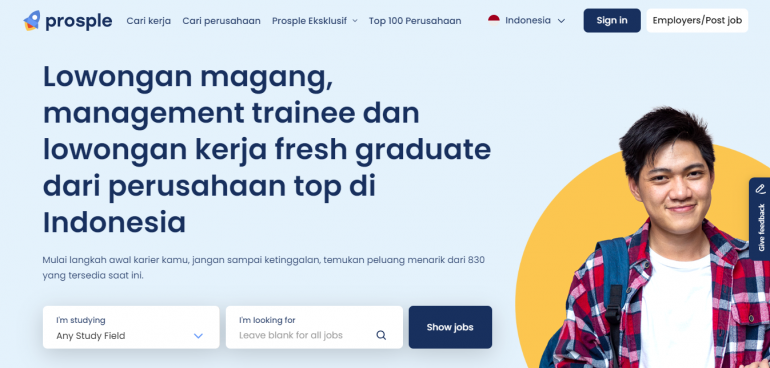
Prosple is a niche job board that connects employers with recent graduates and students looking for internships, graduate jobs, or volunteer opportunities. They use a combination of IP address geolocation and browser language settings to make an initial guess.
Prosple has a user-friendly language bar at the top right of the page. When you click on your preferred language, the content updates right away and shows job posts relevant to that country and in its language.
Prosple knows the importance of cultural and regional contexts, so they adjust their content for each country. For instance, their Australian site uses different terminology or highlights specific programs for the job market there, compared to their website for students in the United States.
Prosple also uses relevant keywords and phrases that people in those regions are likely to search for. This ensures their website reaches the right audience in each language.
They have implemented language-specific search algorithms to deliver the most relevant results for each user. For example, a user searching for "marketing internship" in English will get different results compared to someone searching for a "magang pemasaran" in Indonesian.
III. The Louvre Museum
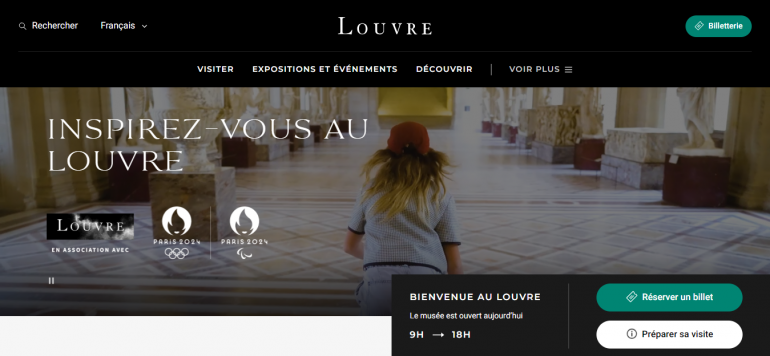
The Louvre Museum is an art museum located in Paris, France, and is one of the largest museums in the world. Its website sets a high bar for multilingual accessibility. They have in-depth descriptions of their vast collection available in multiple languages. This includes details about artists, historical context, and the artworks themselves.
The Louvre website offers interactive features like virtual tours or 3D object exploration. These features are translated and function smoothly in all supported languages. They also have downloadable audio guides in multiple languages. This lets visitors explore the museum at their own pace with explanations in their preferred language.
Also, video content, podcasts, or even interactive quizzes are available in various languages for a better user experience. The Louvre website customizes content to different audiences across languages.
For example, the English version will have a more detailed section on Western European art, while the Japanese version prioritizes information about Asian collections.
IV. AlisQI
AlisQI is a cloud-based Software as a service (SaaS) designed to help manufacturing companies manage their quality control (QC) processes. With the global SaaS market set to reach $908 billion by 2030, AlisQI knows it can't afford to focus on just one country. That is why they launched a multilingual website.
They ensure all UI elements are translated consistently across languages. This includes menus, buttons, error messages, and any on-screen text. This provides a smooth user experience for everyone.
AlisQI ensures its core message stays clear across languages. Major information about their product, its features, and functionalities appears in all translated versions of the website. They also translated key quality control terminology meticulously across languages. This ensures all users understand the specific functionalities and features the software offers.
Regulations and compliance requirements for manufacturing can differ depending on location. AlisQI highlights features or regulations for specific regions. For example, a European user sees information about CE marking compliance while a US visitor gets details about FDA requirements.
V. Edgard & Cooper
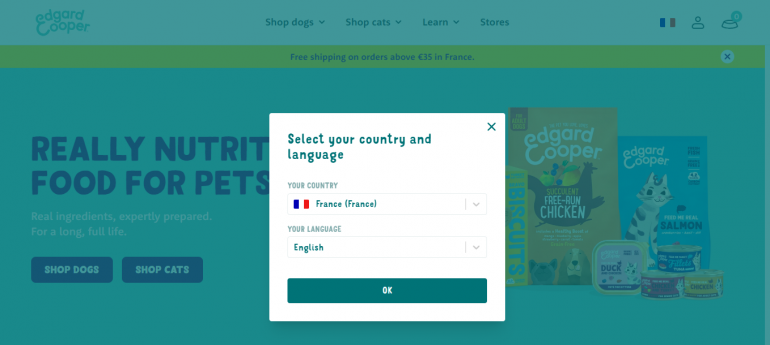
Edgard & Cooper is a pet food company focusing on natural and tasty food for cats and dogs. It gives a truly international experience for pet owners across Europe. They automatically detect your location when you visit their website and show it in the respective language.
Edgard & Cooper has an advanced feature where you can pick your preferred language, no matter where you are. So if you are in France, the site will show up in French by default. But if you would rather see it in English or another language, you can easily switch while still staying logged in from France. This is helpful to multilingual individuals or those traveling abroad.
Their website personalizes offers and sales based on your location. This way, you see deals for your region which maximizes the product appeal. Plus, Edgard & Cooper displays prices and accepts payment in the local currency of your country. Shipping charges are also adjusted based on your location.
Conclusion
The verdict is clear: Don't be limited by geography. Multi-language websites open up markets you couldn't reach before. Now millions of potential customers, each with a unique story, can understand your message in their own words. So go ahead and raise your voice – in every language imaginable.
Web Design offers a wealth of resources to create beautiful, user-friendly websites that convert visitors – no matter their language. With our in-depth tutorials on responsive design and inspiring web design showcases, you can build a website that speaks volumes, in any language. Visit Web Design today or get in touch with us to learn more.
About the author
Burkhard Berger is the founder of Novum™. He helps innovative B2B companies implement modern SEO strategies to scale their organic traffic to 1,000,000+ visitors per month. Curious about what your true traffic potential is?
Copyright © . All Rights Reserved
